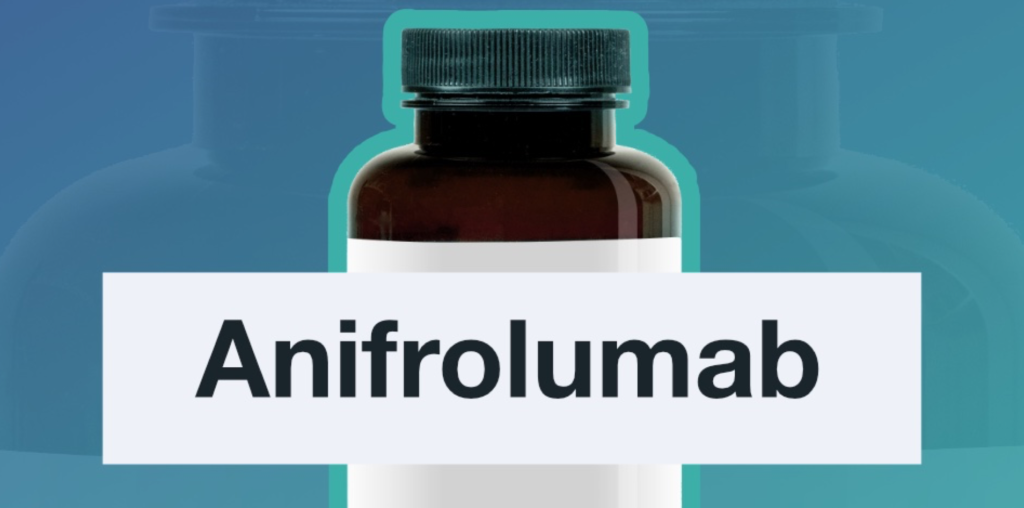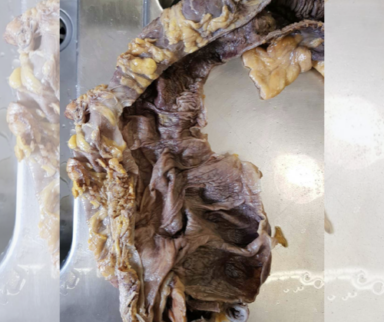
The U.S. Food and Drug Administration approved the drug anifrolumab for use in people with systemic lupus erythematosus, also called SLE or lupus for short.
Anifrolumab is kind of a big deal. It’s the first type 1 interferon receptor antagonist that can be used in lupus. It’s also one of the only new treatments approved to treat lupus in the last decade. This is great news.
But the clinical trials were not all positive, casting doubt on the effectiveness of the drug. So who should receive it, and what outcomes can they expect from this treatment?
TULIP-1 Trial
At the end of November 2018, the drug completed its Phase 2 clinical trial. The results were promising. Patients with moderate to severe lupus taking 300 mg of anifrolumab every four weeks had a notable decrease in arthritis and rash compared to the placebo group. But the larger Phase 3 trial called TULIP-1 hit a setback. It failed to meet the study’s primary endpoint. In this case, that was how the researcher’s defined the drug as being effective. Here, the primary endpoint was the number of patients who achieved an SLE responder index of 4, also called SRI-4, after 52 weeks. To make things easier for you, here’s the definition of SRI-4.
In the TULIP-1 trial, 36% of patients taking anifrolumab reached this endpoint at 52 weeks, compared to 40% of patients in the placebo group.
Now, other metrics were tested in this study, including the cutaneous lupus erythematosus disease area and severity index, also called CLASI, and the British Isles Lupus Assessment Group-based composite lupus assessment, also called BICLA. Both appeared to favor anifrolumab. But none of these metrics were formally tested. The study’s plan requires success on the primary endpoint first. Then it can proceed to secondary endpoints. This “gatekeeping” approach may seem odd, but it’s common in clinical trials. It’s used to preserve the integrity of the study’s plan. So, the takeaway here is that TULIP-1 was a negative trial.
TULIP-2 Trial
But let’s not give up just yet. Those other metrics did appear promising. Maybe the negative result was due to the trial’s design, and not the drug being ineffective. That’s what the TULIP-1 researchers thought. So, they decided to change the primary endpoint of an almost-identical trial that was running in parallel to TULIP-1. They appropriately called it TULIP-2. The new primary endpoint would be patients who met BICLA after 52 weeks. And SRI-4 would become a secondary endpoint. And again for reference, here’s BICLA’s definition.
In science we frown upon “endpoint shenanigans” like this. You don’t change the rules of the game to help your team win. Now apparently these endpoints changed before anyone knew the results of TULIP-2. If true, that’s less eyebrow raising than doing so after the results are known.
So let’s jump forward now to January 2020, when the results of TULIP-2 were released. It showed 48% of people reached BICLA after 52 weeks, compared to 32% of people taking the placebo. It also showed that 56% of people reached SRI-4 after 52 weeks, compared to 38% of people taking the placebo. This suggests anifrolumab was effective at treating lupus, according to both metrics. It appears to significantly improve skin symptoms, and allow a dose reduction of glucocorticoids. That said, the drug doesn’t appear to have any benefit for patients with joint symptoms. And the trial also excluded patients with neuropsychiatric lupus, and lupus nephritis. We just don’t know right now if the drug has any benefit for people with those symptoms.
Why the Difference Between the Trials?
You might be thinking, why is there such a difference between these trials? Salmon and Niewold wrote a great editorial about this. It’s reasonable to assume BICLA might be better than SRI-4 at capturing partial responses to a drug. Or, that SRI-4 puts more weight on arthritis than skin symptoms. But that’s probably not the case, since both TULIP-1 and TULIP-2 were almost identical studies.
Probably the best explanation is just that lupus is a hard disease to study. There are likely many different types of “lupus-es,” and some may or may not respond well to certain drugs.
The Takeaways
Dr. Michael Putman is one of the editors of our rheumatology newsletter, The Differential. He’s also a practicing rheumatologist at the Medical College of Wisconsin. In his newsletter, he wrote that the takeaway from these trials is that anifrolumab clearly has some benefit for people with moderate to severe lupus. The TULIP-2 trial showed positive results likely because of improvements in skin symptoms and glucocorticoid dose reductions. That said, the drug doesn’t appear to benefit people with arthritis symptoms, neuropsychiatric lupus, or lupus nephritis. For him, he’s interested in seeing if future research will further refine who will benefit from the drug. He also is curious to hear if patient’s themselves felt the drug helped them at all.

By Kyle Slinn, RN, BScN, MEd
Registered Nurse
Published April 20, 2022
Join the Conversation
Sign up for Figure 1 and be part of a global community of healthcare professionals gaining medical knowledge, securely sharing real patient cases, and improving outcomes.


